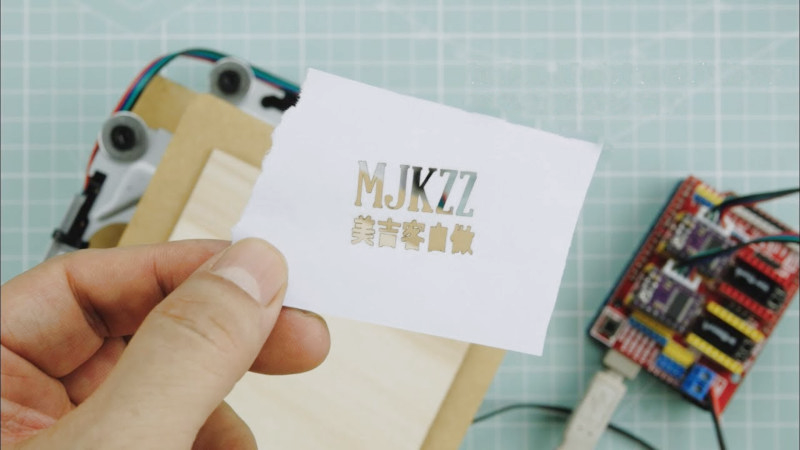CNC comes in all shapes and sizes, from huge industrial lathes to homebuilt wire benders. [MJKZZ] has built their own compact rig, using optical drive parts to create a cute but effective laser engraver. (Video embedded below.)
The build aims to keep things simple by holding the laser stationary, and moving the bed instead. The laser in question is a 500 mW unit, driven by the Z axis on the Arduino CNC shield used to run the system. A DVD drive is taken apart, and the worm drive stepper motor assembly is used to slew the carriage back and forth, atop which is glued a bed. Upon this bed, a copy of the same assembly is then installed, offset 90 degrees, giving the X and Y axes.
The result of this setup is a lightweight moveable bed, controllable through Gcode with GRBL. With the laser situated above on some camera mounting gear, paper can be installed on the bed and engraved with ease. The resulting accuracy is admirable, and at full power, the laser is capable of cutting through the paper.
While it’s a lightweight rig, it could serve a purpose as a cheap and easy way to produce stencils from computerized artwork. Optical drives remain popular in the DIY CNC scene, as they’re a great way to source a moveable platform with all the mechanical considerations already worked out.
https://www.youtube.com/watch?v=4U6n6LP-FF0&feature=youtu.be
















Good adaptation of old repstrap methods. I like how the laser is attached to an adjustable arm.
Nicely done.
Use remaining eye to build a suitable enclosure?
The warnings should come before the instructions.
(Very) similar in concept/execution to the NEJE engraver previously reviewed on Hackaday.
https://hackaday.com/2018/03/01/review-neje-dk-8-kz-laser-engraver/
Does the laser work on skin? New tattoo method coming.
Lasers are sometimes used for tattoo removal…
The first time I saw this same exact project built was 18 years ago, I then copied it and have seen it reproduced again about once every two years when someone stumbles over that old video on YouTube which itself was several times removed from the original. No matter how old and over done a project might be the good thing is there’s always someone who’s just seen it for the first time and gets inspired to hopefully not just duplicate but make it their own. All I see here that has changed is they didn’t scrap the laser from a DVD rw drive which is the old source for high power cheap diode lasers.
Actually, the key part of it is not to remove it from the structure, CD/DVDs are made to be stable. As for the original idea, I am sure this is overly done many times over, but this is an exercise to learn GRBL, to learn laser, etc.